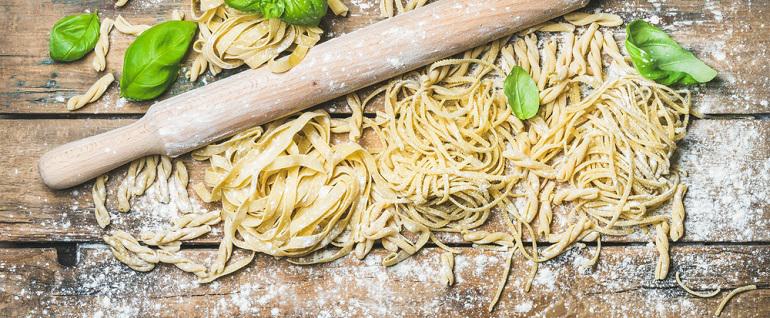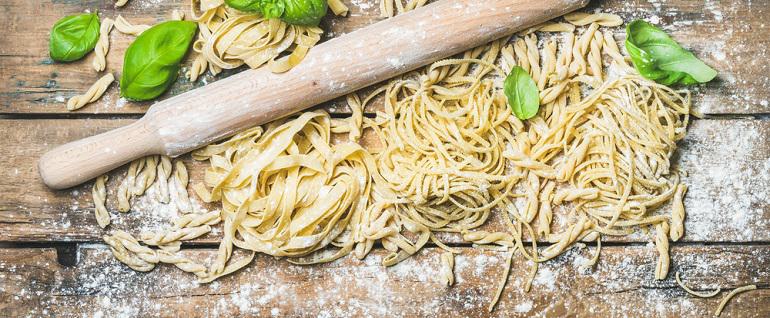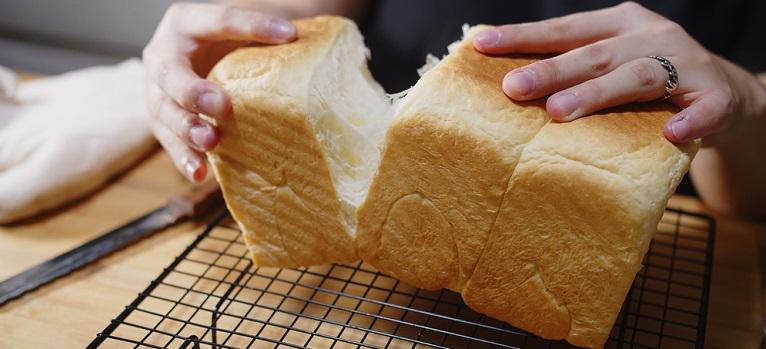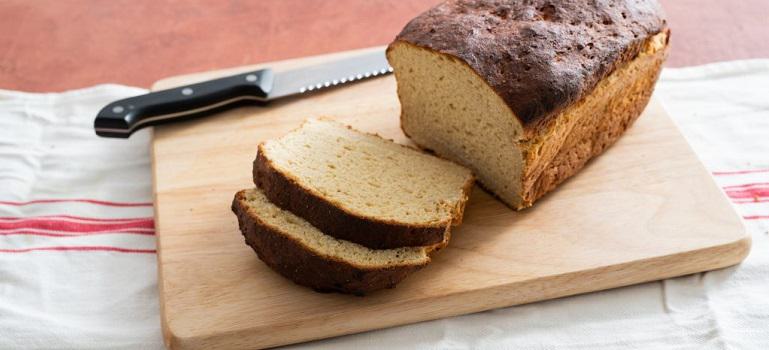


 Creating a light and fluffy loaf of gluten free bread can prove to be a challenging task. Because gluten plays such a prominent role in the bread's ability to bind and rise, a recipe without it rarely tastes the same. That is unless you use xanthan gum. Now, we've talked about xanthan gum's ability to mimic the binding qualities of gluten, but how is that possible? When xanthan gum gets wet, its texture becomes sticky and gelatinous. It also acts as an emulsifier, helping the water and oil in the recipe to combine. As a result of these changes, xanthan gum binds, stabilizes and thickens the ingredients in the dough, mimicking what gluten does.
And it doesn't stop there. As the ingredients in your recipe combine, carbon dioxide is created and released. Then, much like gluten, xanthan gum helps trap that air inside the dough, allowing it to rise. So, instead of making a flat and dense loaf of bread, you get a loaf that's fluffy and full of structure.
Creating a light and fluffy loaf of gluten free bread can prove to be a challenging task. Because gluten plays such a prominent role in the bread's ability to bind and rise, a recipe without it rarely tastes the same. That is unless you use xanthan gum. Now, we've talked about xanthan gum's ability to mimic the binding qualities of gluten, but how is that possible? When xanthan gum gets wet, its texture becomes sticky and gelatinous. It also acts as an emulsifier, helping the water and oil in the recipe to combine. As a result of these changes, xanthan gum binds, stabilizes and thickens the ingredients in the dough, mimicking what gluten does.
And it doesn't stop there. As the ingredients in your recipe combine, carbon dioxide is created and released. Then, much like gluten, xanthan gum helps trap that air inside the dough, allowing it to rise. So, instead of making a flat and dense loaf of bread, you get a loaf that's fluffy and full of structure.
 We understand that xanthan gum's unique name might seem a bit scary to some. Even so, we're here to assure you that when eaten in small amounts, xanthan gum is perfectly safe to eat. As with most foods, when consumed in large quantities, xanthan gum may cause stomach discomfort. However, baked goods will not require large enough amounts to cause symptoms.
Additionally, because xanthan gum is made with ingredients like corn and soy, it may cause an allergic reaction in individuals who are sensitive to those ingredients. All xanthan gum goes through a processing method that leaves only trace amounts of residual proteins from these fermentation sourcesyet, even still, it may be a concern for allergic individuals.
We understand that xanthan gum's unique name might seem a bit scary to some. Even so, we're here to assure you that when eaten in small amounts, xanthan gum is perfectly safe to eat. As with most foods, when consumed in large quantities, xanthan gum may cause stomach discomfort. However, baked goods will not require large enough amounts to cause symptoms.
Additionally, because xanthan gum is made with ingredients like corn and soy, it may cause an allergic reaction in individuals who are sensitive to those ingredients. All xanthan gum goes through a processing method that leaves only trace amounts of residual proteins from these fermentation sourcesyet, even still, it may be a concern for allergic individuals.
 Next to pasta, the food product that most people miss when switching to a gluten free diet is bread. Bread is used daily as a dinner side dish, an appetizer, breakfast and even lunch. Unfortunately, not enjoying bread means that many people are missing out on some of their favorite meals. Luckily, xanthan gum works alongside gluten free bread recipes' ingredients to create grain-free loaves that look and taste the same as their gluten-full counterparts.
To make a delicious everyday bread that's entirely gluten free, follow this Everyday Bread recipe. Made with a combination of our Gluten Free All Purpose Baking Flour and Xanthan Gum, it can be used to make toast, sandwiches, croutons and more!
Now that you understand how crucial xanthan gum is when baking gluten free goods, it's time to purchase some yourself. Xanthan gum can be bought in grocery stores or on our website and used in an endless amount of gluten free recipes. We can't see what tasty treats you whip up in the kitchen. From everyone at Bob's Red Mill, have a healthy and happy day!
Next to pasta, the food product that most people miss when switching to a gluten free diet is bread. Bread is used daily as a dinner side dish, an appetizer, breakfast and even lunch. Unfortunately, not enjoying bread means that many people are missing out on some of their favorite meals. Luckily, xanthan gum works alongside gluten free bread recipes' ingredients to create grain-free loaves that look and taste the same as their gluten-full counterparts.
To make a delicious everyday bread that's entirely gluten free, follow this Everyday Bread recipe. Made with a combination of our Gluten Free All Purpose Baking Flour and Xanthan Gum, it can be used to make toast, sandwiches, croutons and more!
Now that you understand how crucial xanthan gum is when baking gluten free goods, it's time to purchase some yourself. Xanthan gum can be bought in grocery stores or on our website and used in an endless amount of gluten free recipes. We can't see what tasty treats you whip up in the kitchen. From everyone at Bob's Red Mill, have a healthy and happy day!